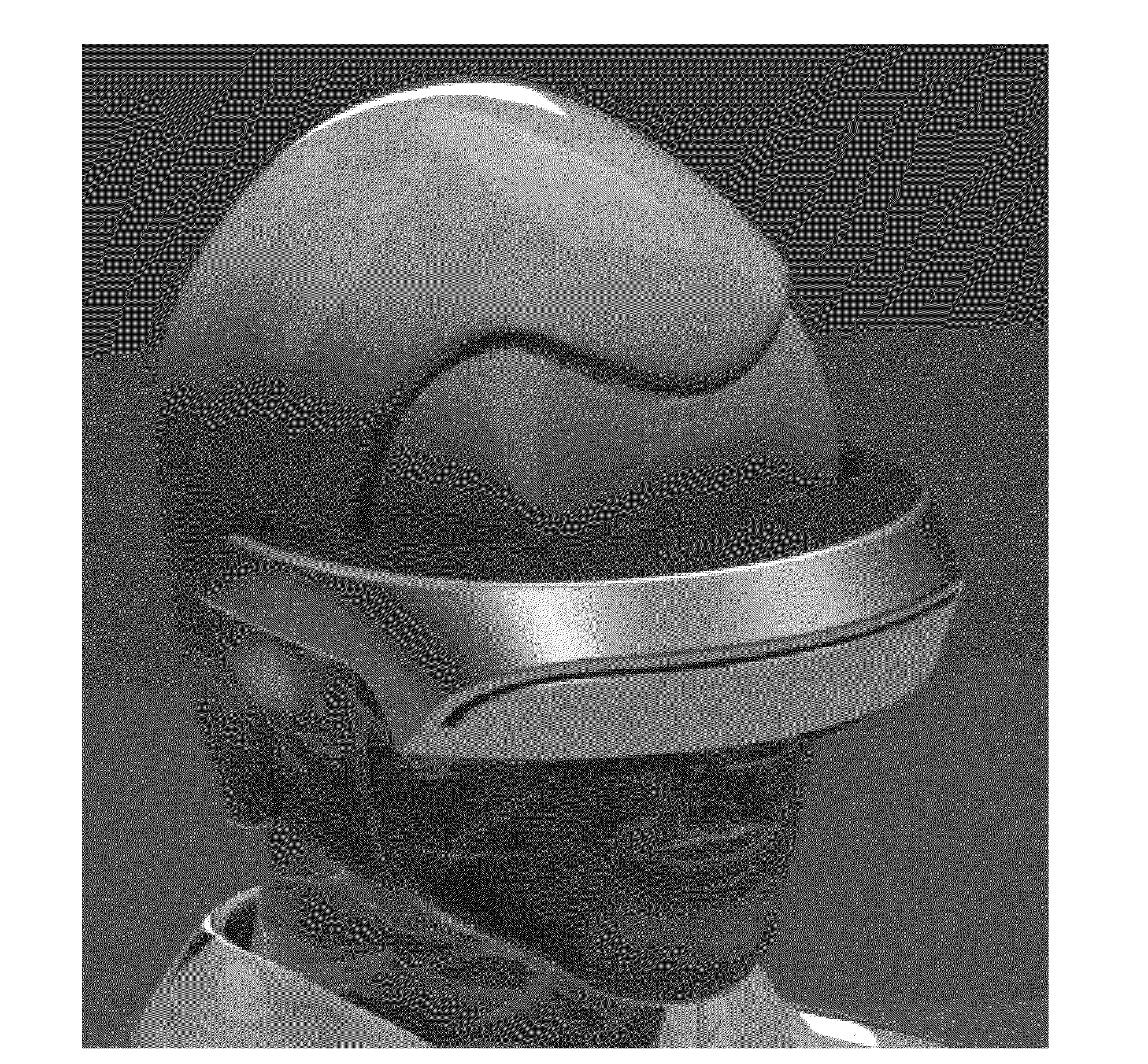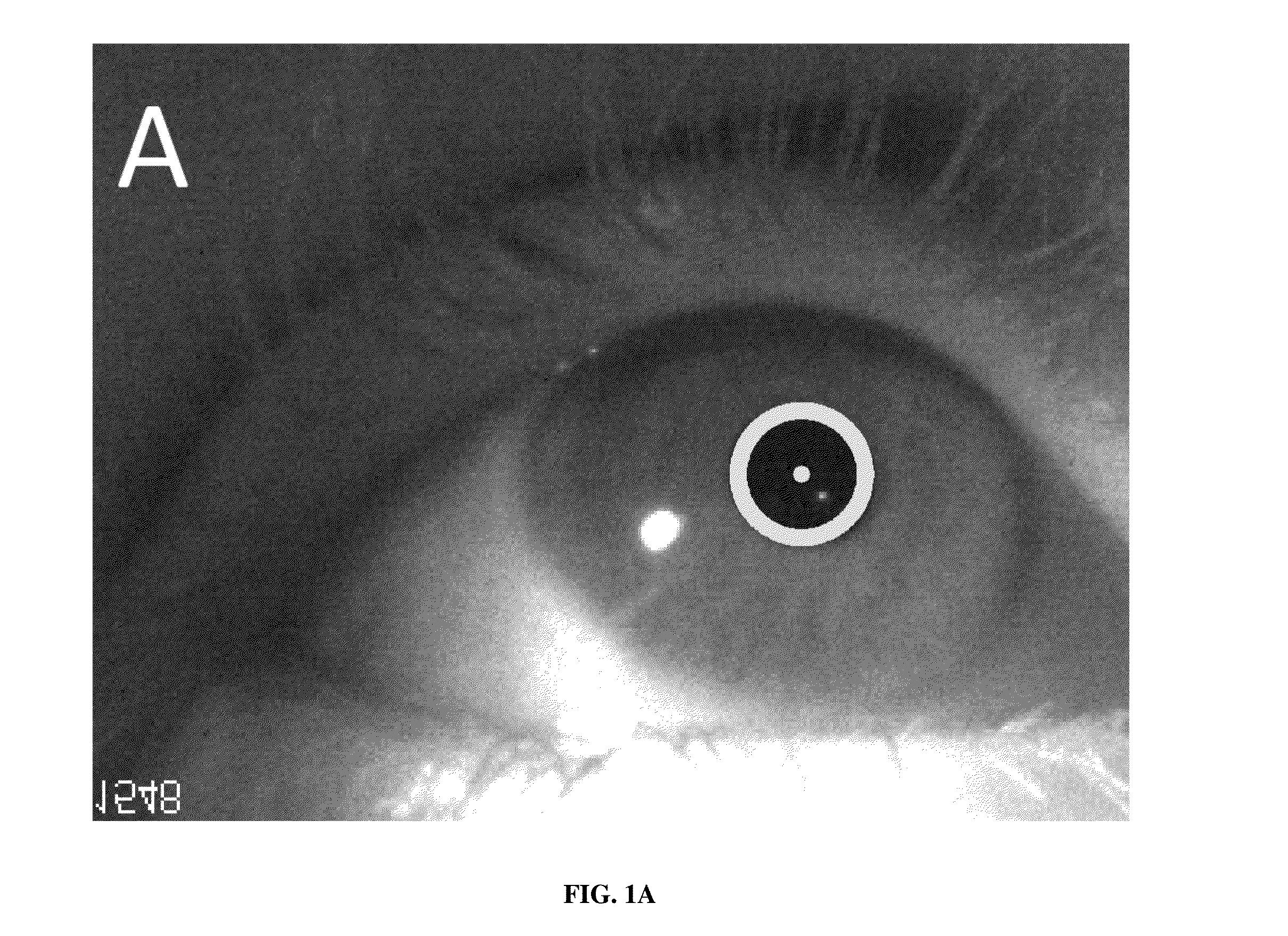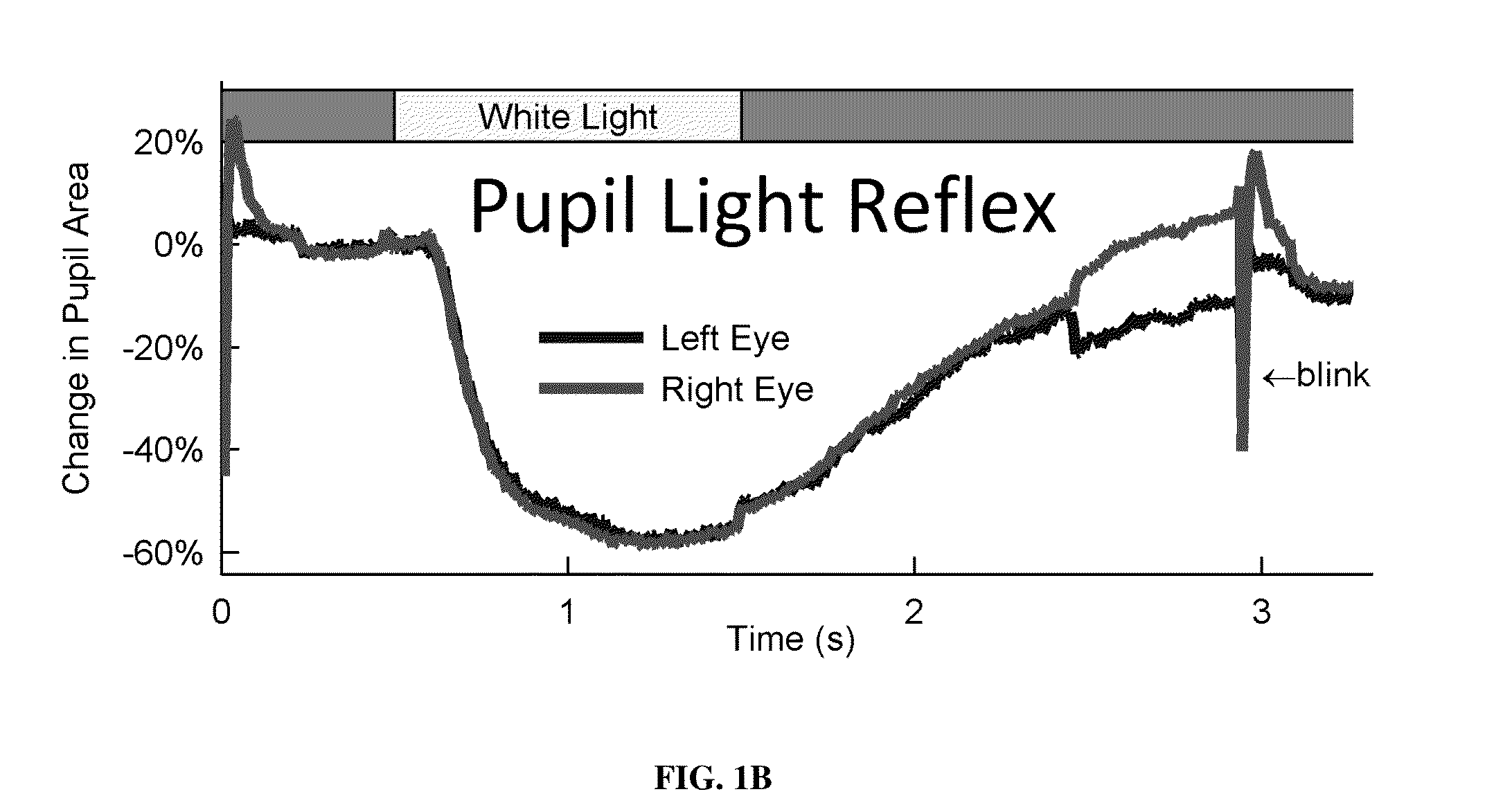System for traumatic brain injury detection using oculomotor tests
a technology of traumatic brain injury and oculomotor test, which is applied in the field of measuring neurological impairment, can solve the problems of chronic neurological dysfunction, secondary neurodegenerative damage, maladaptive plasticity, etc., and achieve the effect of calculating the level of neurological impairmen
- Summary
- Abstract
- Description
- Claims
- Application Information
AI Technical Summary
Benefits of technology
Problems solved by technology
Method used
Image
Examples
Embodiment Construction
[0043]Exemplary embodiments of the present disclosure include an apparatus (also referred to herein as the “NeuroTriage Headset”). Exemplary embodiments are designed to detect physiological changes associated with mild traumatic brain injuries. Exemplary embodiments are designed to measure changes in neurological function following mTBI and compare those measurements to baseline measures to detect changes in neurological status. Embodiments of the invention may include web based applications that will allow the data to be collected and analyzed in real time. This will allow individuals and their health care teams to identify changes in neurological status compared to baseline measurements. These devices may predict the long-term neurological consequences of mTBI. Exemplary embodiments may prove useful in providing the information needed to develop strategies, rules, and interventions to minimize neurological damage due to head impacts.
[0044]NeuroTriage Headset and Method of Evaluati...
PUM
 Login to View More
Login to View More Abstract
Description
Claims
Application Information
 Login to View More
Login to View More - R&D
- Intellectual Property
- Life Sciences
- Materials
- Tech Scout
- Unparalleled Data Quality
- Higher Quality Content
- 60% Fewer Hallucinations
Browse by: Latest US Patents, China's latest patents, Technical Efficacy Thesaurus, Application Domain, Technology Topic, Popular Technical Reports.
© 2025 PatSnap. All rights reserved.Legal|Privacy policy|Modern Slavery Act Transparency Statement|Sitemap|About US| Contact US: help@patsnap.com



